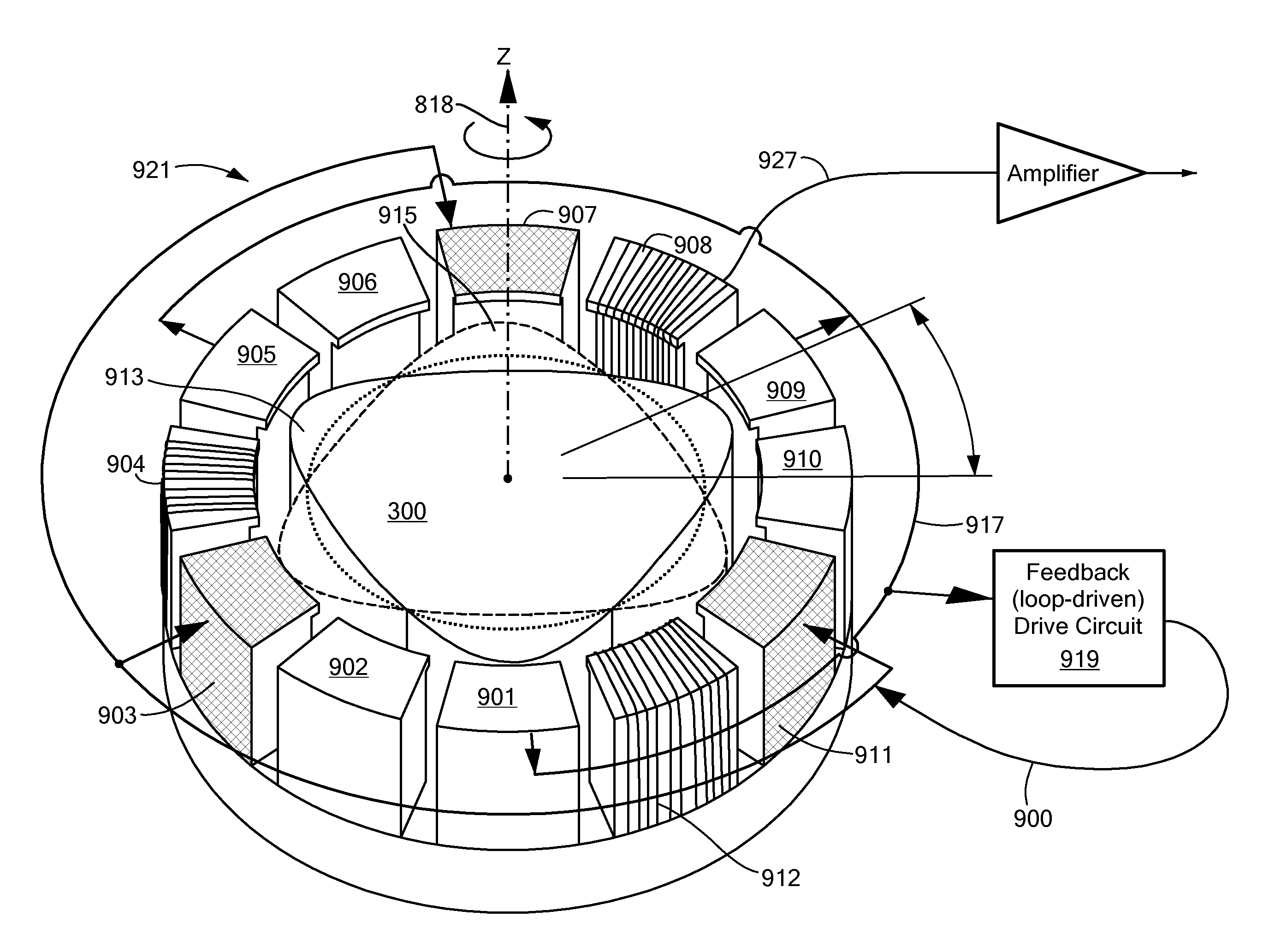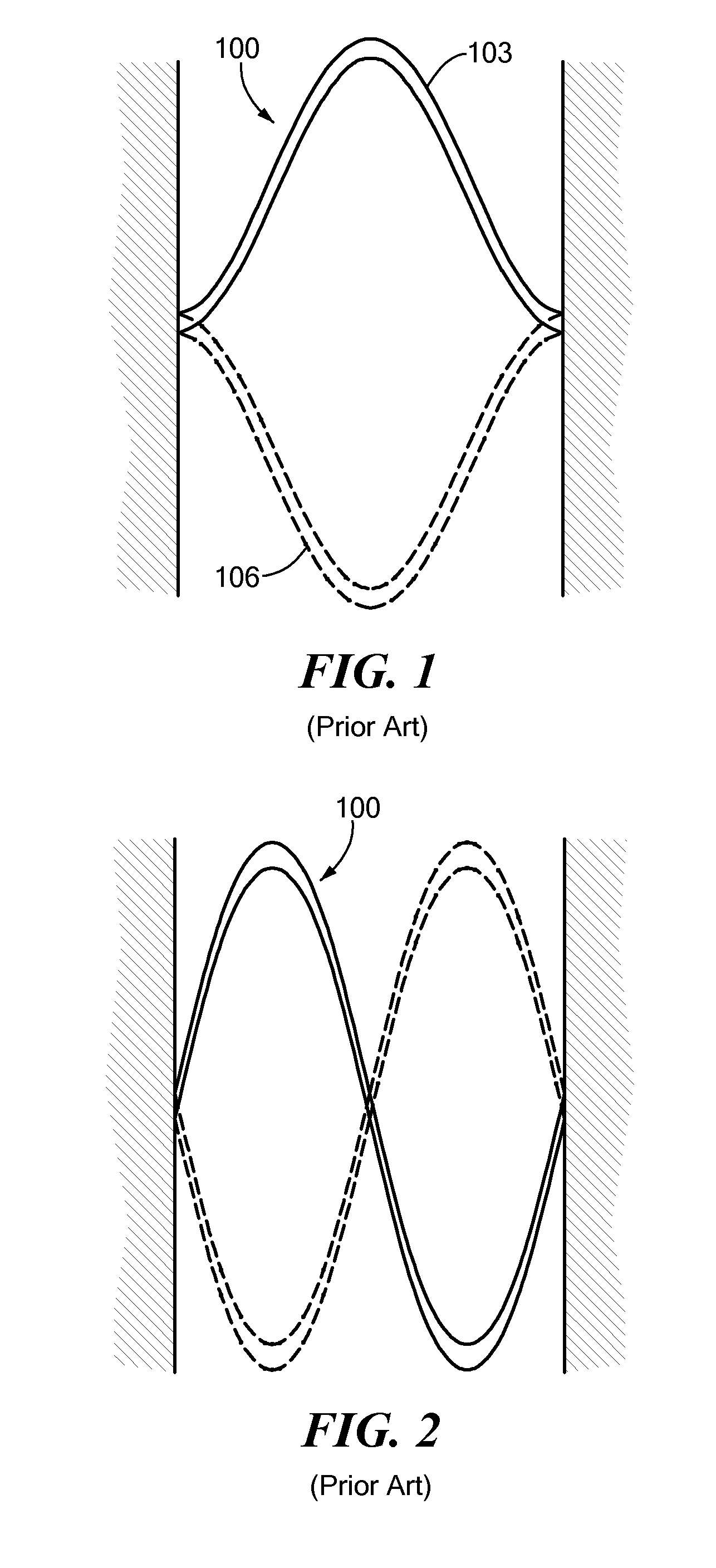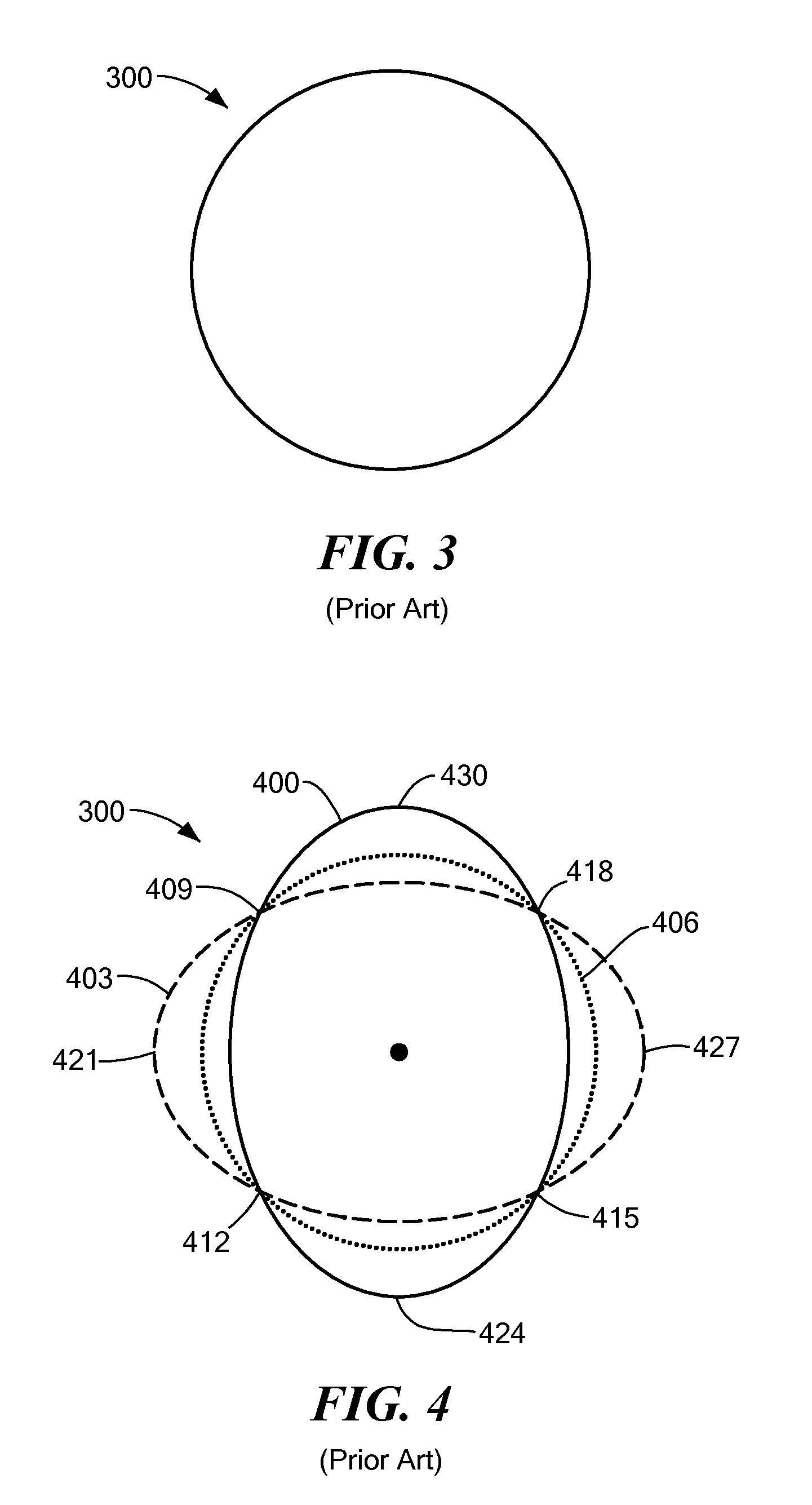Non-degenerate mode MEMS gyroscope
a gyroscope, non-degenerate technology, applied in the direction of acceleration measurement using interia force, turn-sensitive devices, instruments, etc., can solve the problems of loss of sensitivity, output of gyroscope, and serious problems of baw gyroscopes, so as to reduce quadrature errors
- Summary
- Abstract
- Description
- Claims
- Application Information
AI Technical Summary
Benefits of technology
Problems solved by technology
Method used
Image
Examples
Embodiment Construction
[0008]An embodiment of the present invention provides a microelectromechanical systems (MEMS) gyroscope. The gyroscope includes a substrate and a primary member attached to the substrate. The primary member is configured to vibrate in a first bulk acoustic mode at a drive frequency in response to a varying electrostatic signal. The primary member is also configured to vibrate in a second bulk acoustic mode at the drive frequency in response to the primary member being rotated about an axis. The second bulk acoustic mode is different than the first bulk acoustic mode. The first bulk acoustic mode and the second bulk acoustic mode are non-degenerate.
[0009]The second bulk acoustic mode may be characterized by a resonant frequency. The drive frequency may differ from the resonant frequency of the second bulk acoustic mode. The microelectromechanical systems (MEMS) gyroscope may also include a drive circuit and a servo circuit coupled to the drive circuit. The drive circuit may be config...
PUM
 Login to View More
Login to View More Abstract
Description
Claims
Application Information
 Login to View More
Login to View More - R&D
- Intellectual Property
- Life Sciences
- Materials
- Tech Scout
- Unparalleled Data Quality
- Higher Quality Content
- 60% Fewer Hallucinations
Browse by: Latest US Patents, China's latest patents, Technical Efficacy Thesaurus, Application Domain, Technology Topic, Popular Technical Reports.
© 2025 PatSnap. All rights reserved.Legal|Privacy policy|Modern Slavery Act Transparency Statement|Sitemap|About US| Contact US: help@patsnap.com



